
Types of Brooms
Brooms are essential tools in maintaining cleanliness and sanitation in various commercial settings. From restaurants and hotels to offices and warehouses, different types of brooms are designed to tackle different cleaning tasks effectively. Understanding the various types of brooms available can help businesses choose the right tool for their specific cleaning needs.
Shop All Commercial Brooms
Choosing the right broom for your commercial establishment is essential to maintain cleanliness and hygiene standards. Below, we cover the various of types of commercial brooms available, and the various situations each broom performs best in:
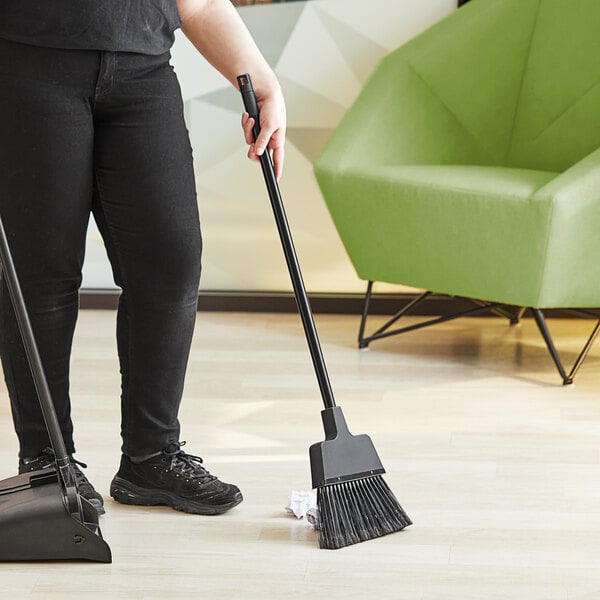
Lobby Brooms
These brooms typically feature a long handle and a small brush head, allowing for easy maneuverability and reaching tight spaces. Lobby brooms are commonly used in hotels, restaurants, and office buildings to sweep away dust, dirt, and debris from hard floors and carpets.
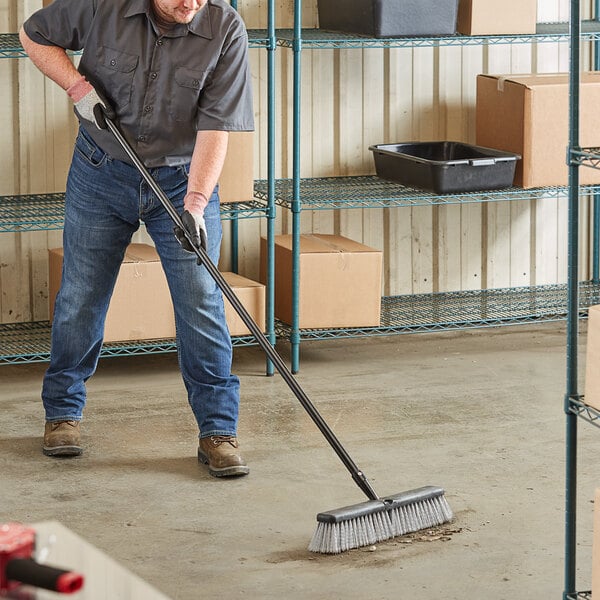
Push Brooms
Push brooms are wider than traditional models, making them ideal for heavy-duty tasks. These brooms feature a wide brush head with stiff bristles, allowing for efficient removal of dirt, debris, and even wet substances.

Whisk Brooms
Whisk brooms, also called hand brooms, are compact and versatile tools that are ideal for spot cleaning and hard-to-reach areas. These brooms have a small brush head and a short handle, making them easy to handle and store. Whisk brooms are commonly used in restaurants, hotels, and retail stores for sweeping away crumbs, dust, and small debris from countertops, shelves, and other surfaces.
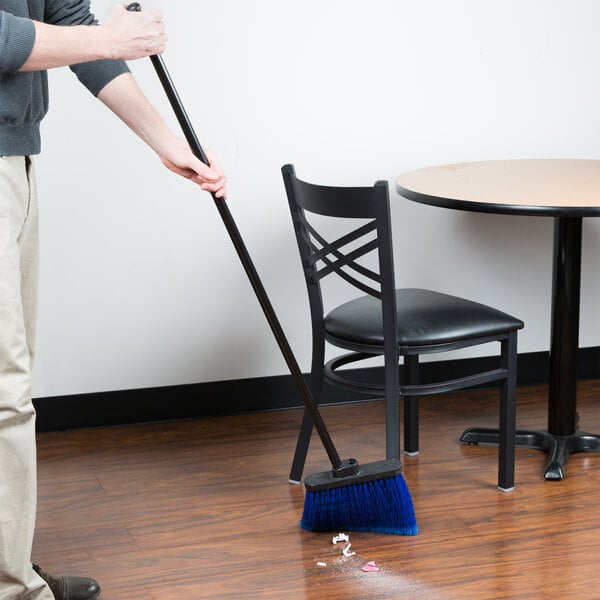
Warehouse Brooms
Warehouse brooms typically feature a wide sweeping path, allowing for efficient cleaning of large areas. They are designed with durable bristles that are capable of sweeping up larger debris, such as sawdust, metal shavings, and wood chips commonly found in warehouses and manufacturing facilities.
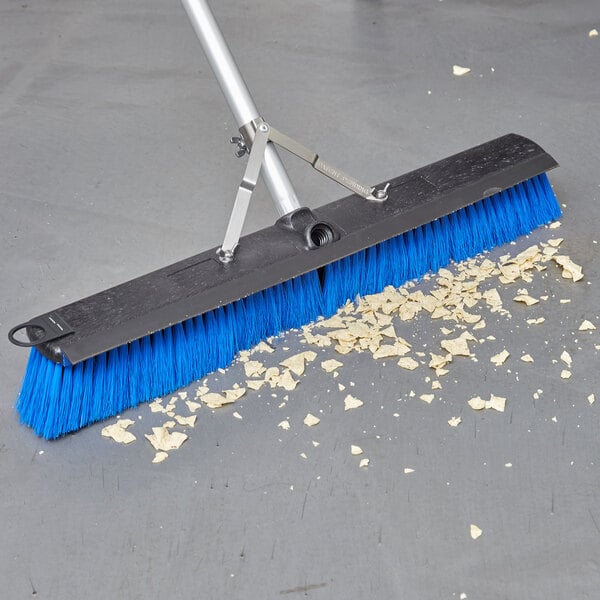
Squeegee Brooms
These brooms feature a combination of bristles and a rubber squeegee blade, allowing for both sweeping and liquid collection in one motion. The bristles of squeegee brooms effectively capture dry debris, while the squeegee blade is perfect for pushing and collecting wet spills and liquids.

Street Brooms
Street brooms are heavy-duty brooms designed for outdoor use on streets, sidewalks, parking lots, and other paved surfaces. These brooms are typically larger and more robust than traditional brooms, as they need to withstand rough surfaces and heavy debris.
When choosing a broom, consider the following questions before you make your purchase:
What Types of Floors Do I Have?
Different brooms are designed for different types of flooring. For smooth, hard surfaces such as tile or hardwood, a broom with soft bristles is ideal to prevent scratching. On the other hand, rough or textured surfaces like concrete or outdoor areas may require stiffer bristles for effective sweeping.
What Types of Debris Am I Usually Sweeping Up?
The type and size of debris you typically encounter will determine the broom bristle material you should choose. For fine dust and small particles, synthetic bristles are effective. However, if you often encounter larger debris such as leaves or paper, natural bristles like corn or horsehair may be more suitable.
Are There Tight Spaces and Corners I Need to Clean?
If your facility has tight spaces and corners that are difficult to reach, consider a broom with a smaller head or angled bristles. These features allow for better maneuverability and ensure that no dirt or debris is left behind.
Do I Need to Sweep Wet Areas, Dry Areas, or Both?
It is important to consider whether you will be sweeping wet areas, dry areas, or both. For wet areas, such as kitchens or bathrooms, a broom with synthetic bristles that do not absorb water is recommended. On the other hand, for dry areas, natural bristles or a broom with electrostatic properties can effectively attract and capture dust and debris.
Are There Oils, Chemicals, or Other Compounds on My Floors?
If your facility deals with oils, chemicals, or other compounds that may be present on the floors, it is crucial to choose a broom that is resistant to these substances. Look for brooms with chemical-resistant bristles or ones that are specifically designed for use in industrial environments.
Understanding the different parts of a broom is essential for selecting the right broom for your commercial needs. Whether you are sweeping up debris in a restaurant, warehouse, or office space, having a broom with the right components can make your cleaning tasks more efficient and effective.
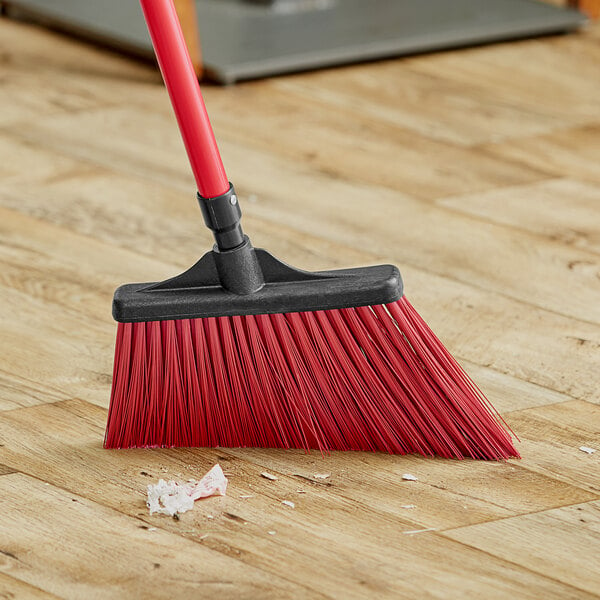
- Handle - The handle, also known as the broomstick, is typically made of wood or metal and provides the user with a comfortable grip. Longer handles are ideal for larger areas, as they allow for a wider range of motion and reach.
- Bristles - Bristles are the most crucial part of a broom, as they come into direct contact with the surface being swept. The choice of bristle material depends on the type of debris you are dealing with. Soft bristles are suitable for fine dust and debris, while stiff bristles are more effective at sweeping up larger particles and heavy debris.
- Head - The head, also referred to as the broom block, is the part of the broom that holds the bristles in place. A broom's head can vary in size and shape, depending on the intended application. For example, a wide head with a larger surface area is suitable for sweeping large open spaces, while a narrower head is ideal for reaching into tight corners and crevices.
- Hook - Located at the top of the broom's handle, the hook allows the broom to hang in a storage closet.
There are two main types of broom bristles: flagged and unflagged. While unflagged bristles tend to last longer than flagged bristles, there isn't one that is better than the other. They both specialize in different areas, so it's all about finding the right tool for the job.


- Captures fine particles
- Ideal for smooth surfaces
- Improved sweeping efficiency
- Not suitable for heavy-duty tasks
- Prone to wear and tear
- Limited versatility


- Great for industrial or construction sites
- Highly durable
- Can be used in a variety of cleaning applications
- Less gentle on surfaces
- Limited dust collection
- Less flexibility
We offer a wide range of bristle materials to fit any application. Choose a material that excels at a specific task, or go for something versatile that can be used throughout your facility. Mixing and matching materials is a great way to make sure that all of your floor surfaces are being properly maintained.
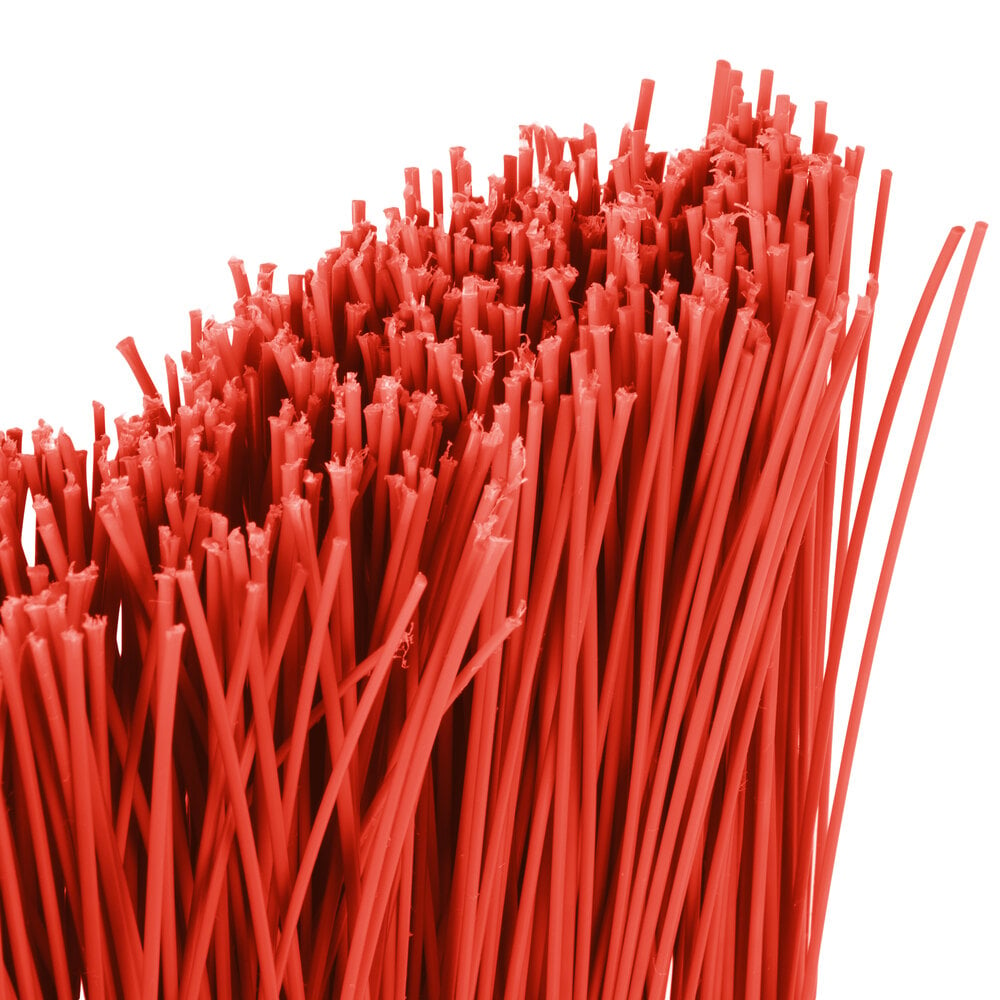
Polypropylene
Great for medium to heavy floor sweeps and scrub brushes, polypropylene offers good abrasion resistance and shear/break strength. It is resistant to water, solvents, acids, oils, fungus, and bacteria growth, and will not stain, discolor, or absorb odors. These bristles are great for bot wet and dry applications and indoor and outdoor use.

Natural Corn Fibers
Natural corn fiber bristles are ideal for sweeping dust and fine dirt in dry conditions. These bristles are made of expertly bound and hewn corn straw, making them highly durable yet non-damaging to your floors.
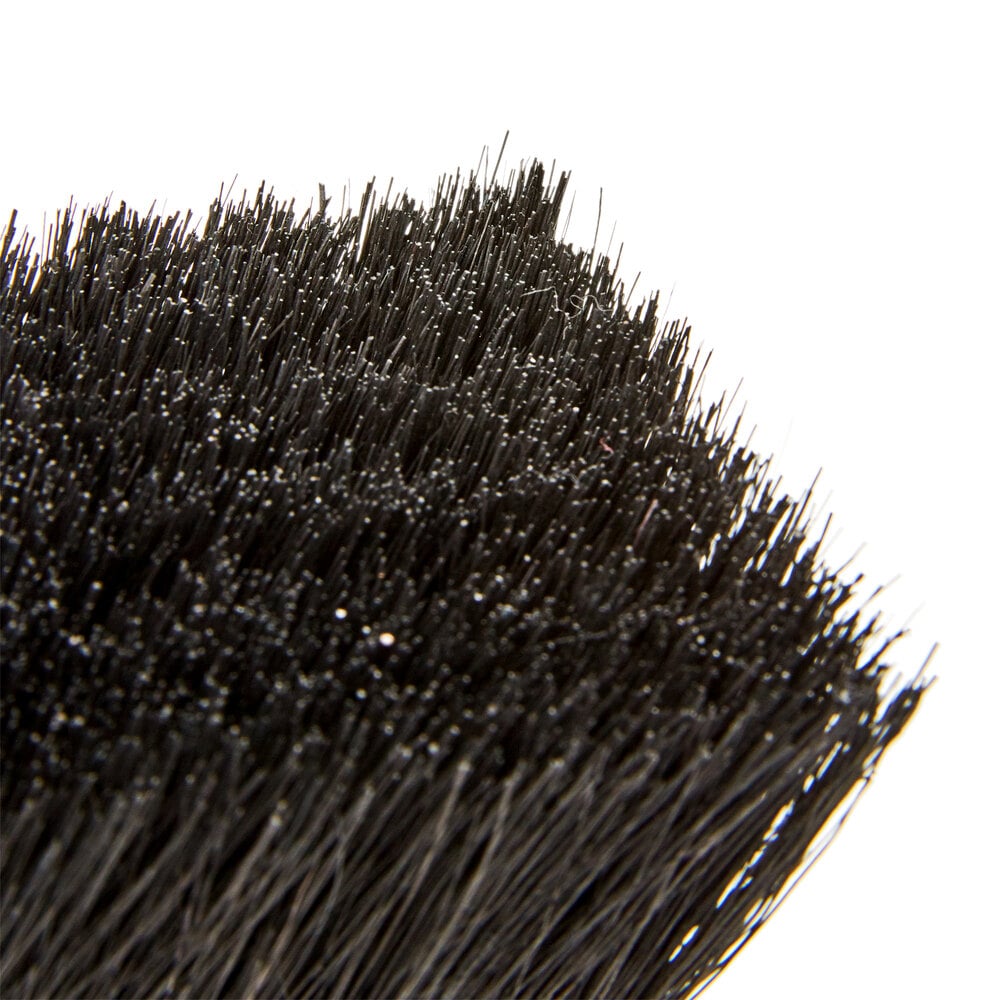
Tampico Fibers
Produced from the stem of the Mexican agave plant, tampico fibers have a medium texture and are ideal for dry sweeping on semi-smooth surfaces. These natural fibers are also resistant to heat and chemicals.
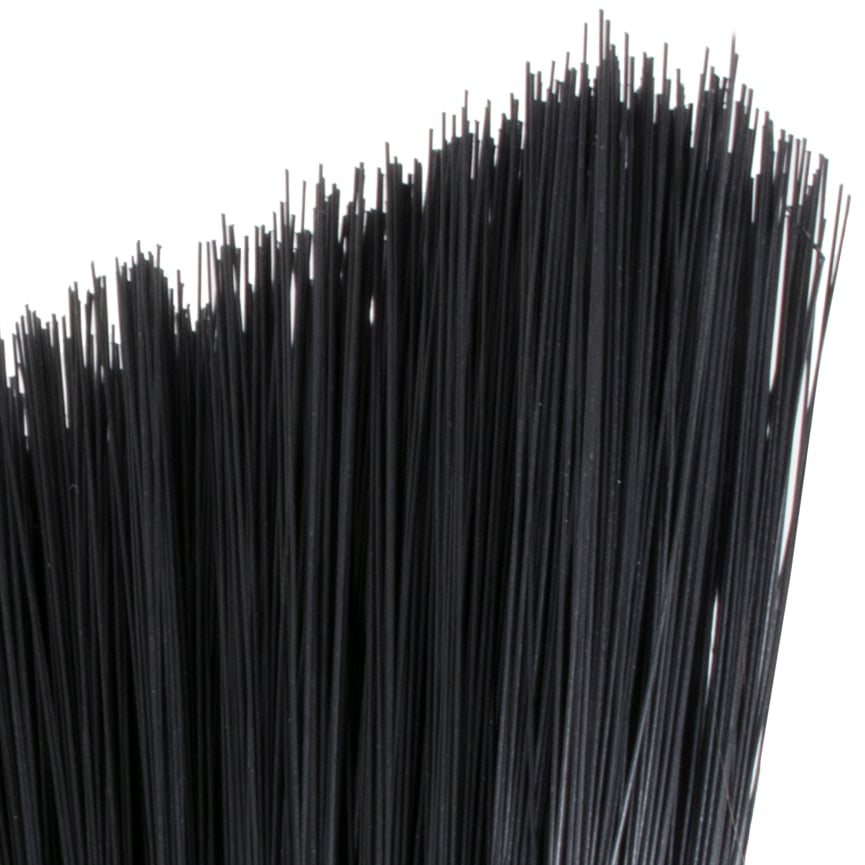
Nylon
Nylon bristles are stiff yet flexible for general cleanup of small debris on smooth floors like hardwood or laminate. These brooms are generally for indoor use, but they do resist water and won't absorb odors.

Synthetic
Synthetic bristles can be used on wet or dry surfaces because they are highly resistant to acids and oils. Synthetic bristles are also flexible and won’t scratch the surfaces of your floor.
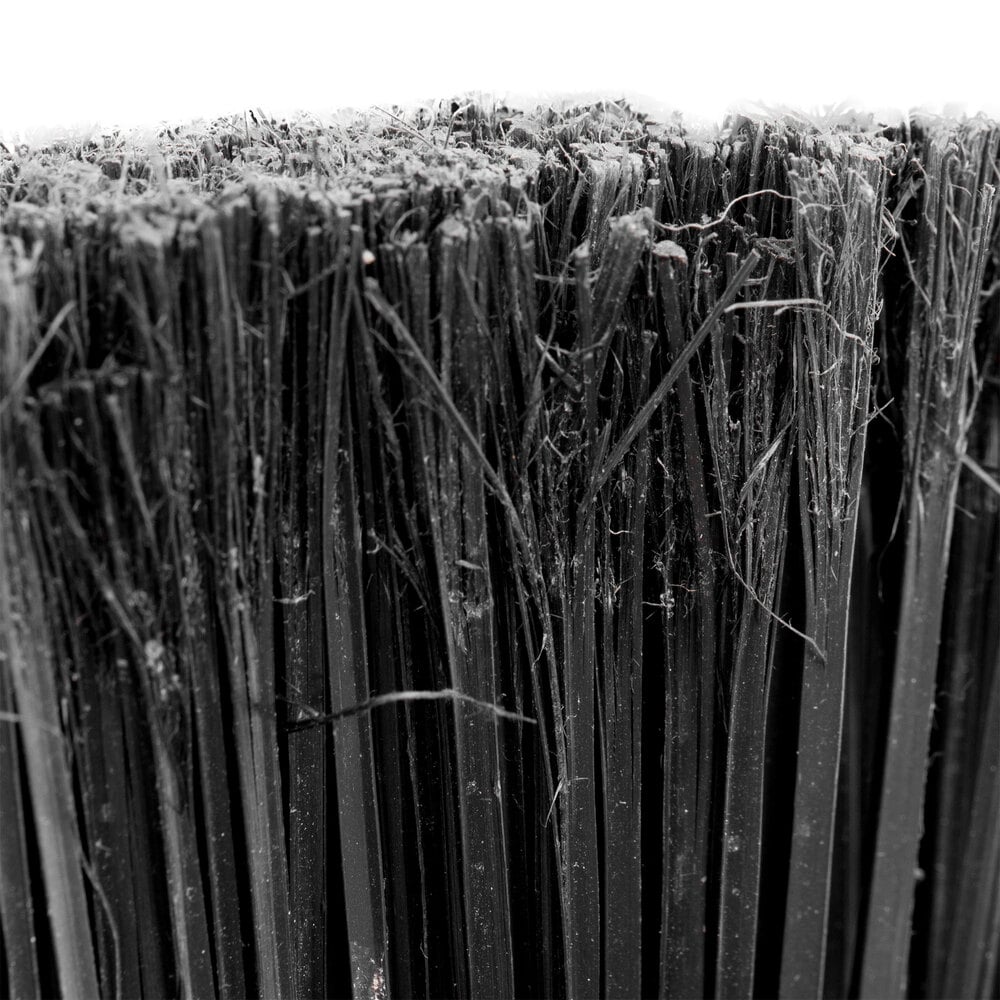
Synthetic Corn
Chemical- and liquid-resistant, synthetic corn bristles can withstand high temperatures up to 225 degrees Fahrenheit. "X"-shaped bristles are excellent for use on carpets and entry mats.

Horsehair
Horsehair bristles are gentle on floors and durable for long-lasting use. This type of bristle blends well with other types of bristles and is perfect for sweeping dust and dirt in interior spaces.
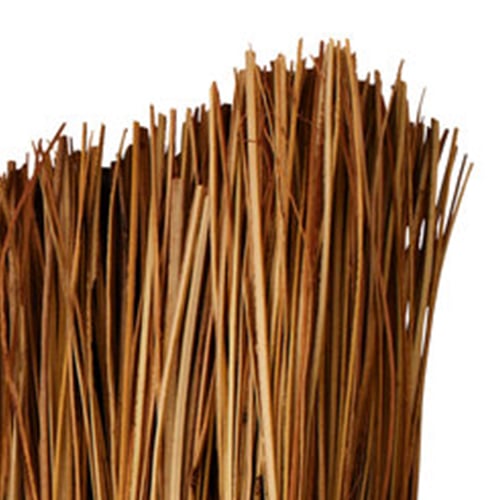
Palmyra
This type of bristle is on the stiffer side and is durable, making it ideal for industrial workspaces or food service establishments. Palmyra is excellent for general cleaning and can withstand everyday use.
Because of the nature of how brooms are used, they collect dirt, dust, and grime. Therefore, to prevent the spread of dirtiness and to keep your brooms clean, regular cleanings are important. Plus, the broom will more effectively clean if it's regularly maintained.
- Remove Debris - Dirt, dust, and even hair can cling to your broom's bristles. Use your hands or even a vacuum cleaner to make sure the debris is removed before you use your broom.
- Soak the Bristles - Soaking the bristles will help keep the broom clean while preventing cross contamination.
- Clean Handles and Dust Pan - Wipe down your broom handle and dust pan with a disinfectant spray.

Designate a different broom for each different sweeping job that you are doing. This helps prevent the unwanted spread of germs to different areas.
In addition to the essential broom itself, there are several accessories available to enhance the functionality and convenience of your broom. Whether you need to replace a worn-out component or are looking to optimize your cleaning routine, these accessories can make a significant difference. Below we've outlined some common broom accessories that can improve your cleaning experience:

Broom Heads
Swapping out broom heads is a great way to save some money and maximize the value of your handles. They come in various sizes and materials, allowing you to choose the one that best suits your cleaning needs.

Broom Handles
Broom handles, also known as broom poles or broomsticks, are the long, cylindrical shafts that attach to the broom head. They allow you to hold and maneuver the broom comfortably. If your broom handle appears damaged, consider swapping out your worn or damaged handles to avoid having to buy a completely new broom.
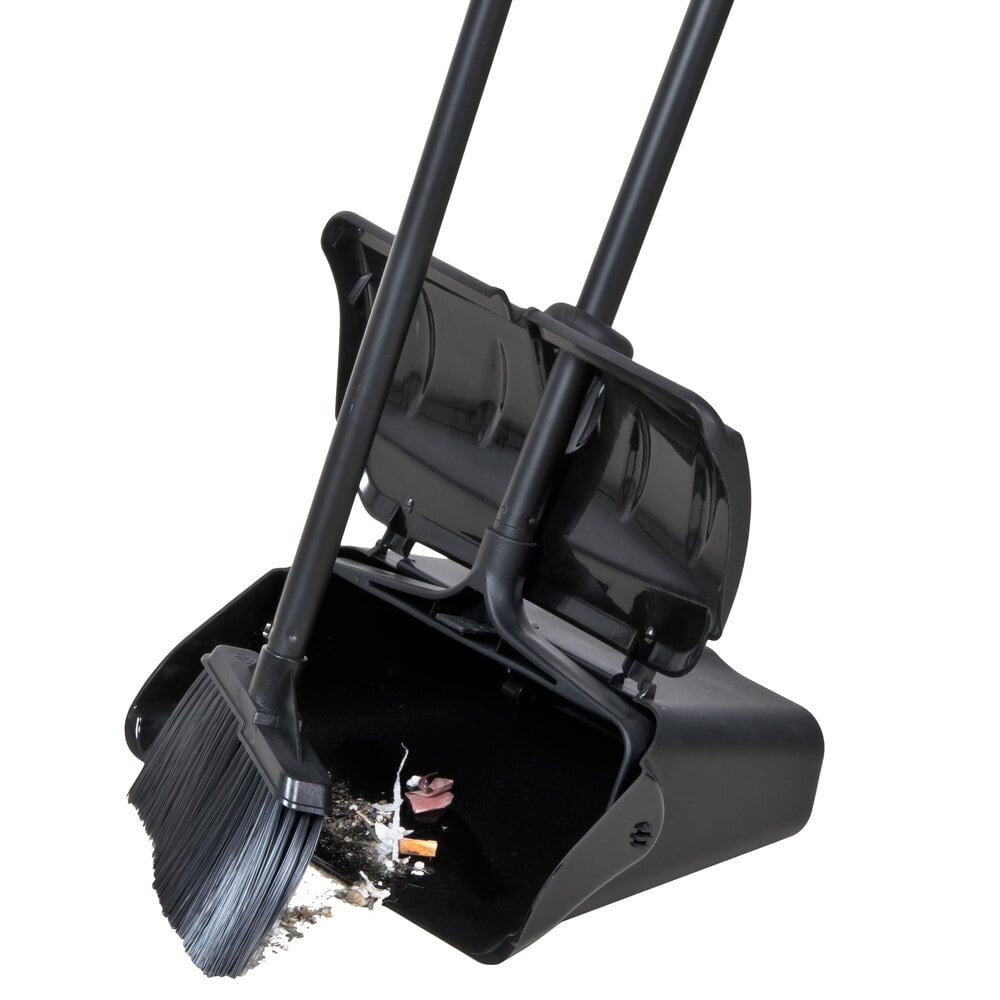
Dustpans
These broom accessories are designed to work in conjunction with brooms, allowing you to sweep debris directly into the pan for easy disposal. Dustpans come in different sizes and styles, including handheld dustpans and upright dustpans with long handles.
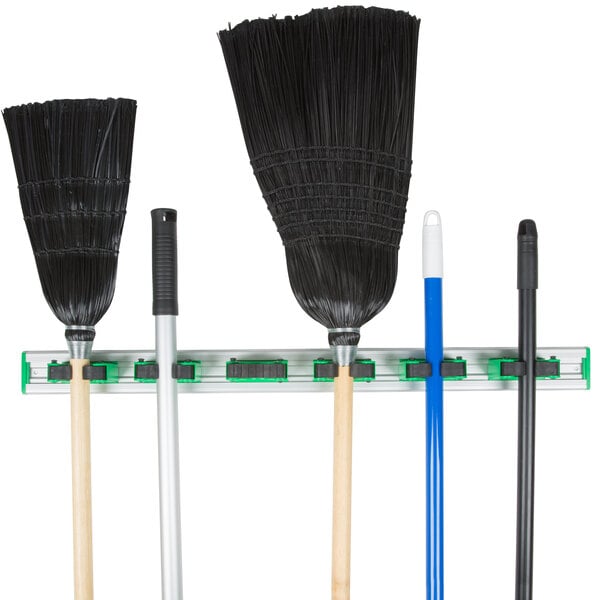
Hangers/Organizers
To keep your brooms organized and easily accessible, consider investing in hangers and organizers. Broom hangers are designed to securely hold brooms on walls or doors, keeping them off the floor and saving valuable space.
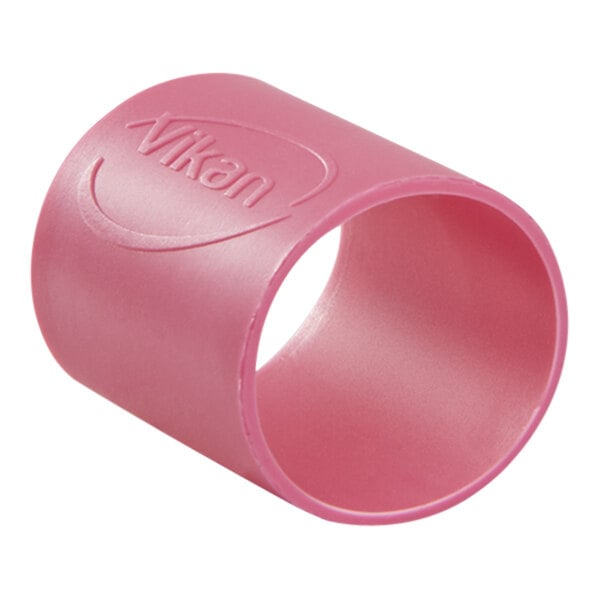
Broom Bands
Easily distinguish your different brooms by labeling them with broom bands. These bands attach directly to your broom handles, allowing to color code your brooms by specific tasks.
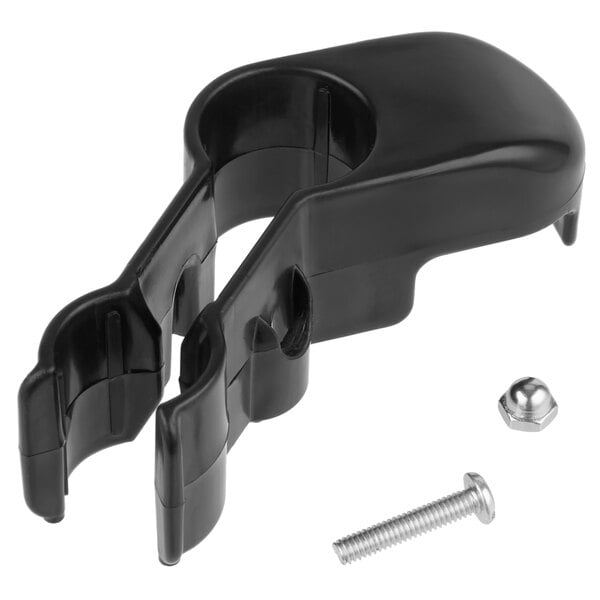
Broom Brackets
Broom brackets allow for your brooms and dustpans to be attached to trash cans, providing easy transportation of cleaning supplies across your establishment.
Related Resources
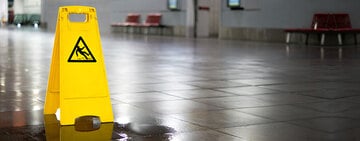
How to Clean, Strip, & Finish Floors
Keeping your floors looking like new is an easy way to ensure safety and sanitation while pleasing guests and enhancing your establishment's overall appearance. Stripping, waxing, and sealing / finishing your floors is the best way to combat scuffs, dirt, and unsightly damage. Check out this guide for more information on all three steps and the right tools to get the job done!
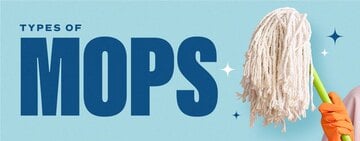
Types of Mops
From busy kitchens to school hallways, mops are essential for keeping your floors sparkling clean. Sometimes it can seem like a never-ending task to keep up with your high-trafficked floors, but the right mop can make your floor cleaning easier and more effective. Learn all about the different types of mops so you can choose the best tool for your application. Shop All Mops and Accessories Click below to learn more about the different types of mops: Wet Mop Heads Wet Mop Materials Wet Mop Handles Wet / Dry Mop Pads Wet Mop Comparison Mop Storage and Care

Foodservice Towels for Sanitation
Foodservice towels and wipes are essential to several foodservice tasks, such as cleaning up spills, sanitizing food-contact surfaces, and dusting display counters. Using disposable and reusable foodservice towels can help your establishment abide by food safety guidelines . This guide outlines the types of foodservice wipes available to you so you can maintain the highest standard of cleanliness on all surfaces.
- Topics 1343
- Industrial 55
- Troubleshooting Guides 21
- Restaurant Management 128
- Bar Management 55
- Catering Tips 35
- Bakery Management 41
- Food Trucks & Concessions 49
- Advertising & Marketing 37
- Eco-Friendly Tips 11
- Facility Layout & Design 41
- Coffee Shop Tips 27
- Installation & Maintenance 51
- Janitorial & Pest Control 30
- Safety & Sanitation 88
- Startup Tips 104
- Menu Design 10
- Kitchen & Cooking Tips 81
- Hospitality Management 23
- Pizza & Sandwich Shop Tips 35
- Smallwares 37
- Food Prep 88
- Tabletop Items 17
- Disposables 22
- Calculators & Tools 6
- Consumables 52
- Warewashing & Laundry 18
- Cooking Equipment 90
- Food Storage & Refrigeration 51
- Beverage Equipment 34
- Office Supplies 6
- Resource Type
- In-Depth Articles271
- Buying Guides296
- How-Tos93
- Product Reviews77


